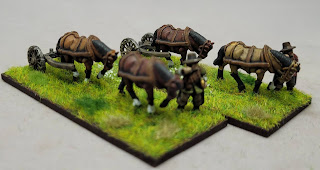Cue the wobbly cinematic 'go-back-in-time' effect...
Richard Cromwell has resigned as Lord Protector due to pressure from the Grandees of the New Model Army. The Rump Parliament has been reinstated. Meanwhile John Mordaunt, and the Sealed Knot have been trying to incite Royalist rebellions.
The planned uprisings were all pretty much nipped in the bud thanks to a combination of incompetence and lack of coordination (on the Royalist side), and the good fortune of intercepting the plans (on the Parliamentarian side).
Only one such rebellion gained any real traction. Sir George Booth of Dunham Massey, former Parliamentarian commander of Nantwich garrison, and brother-in-law of Lord Grey of Groby, was to lead the Cheshire rising. Booth appears to have considered cancelling the whole thing at the eleventh hour, but as the planned day of rising fell on a Sunday, many Presbyterian clergy had called on their congregations to join him. Men were already being assembled and arms gathered, giving the leaders little choice but to continue; Booth mustered several hundred supporters at Warrington. He advanced towards Chester, assembling at Rowton Heath where more men joined him. On entering Chester, the city gates were wide open, the garrison commander had locked himself away in Chester Castle, and more men flocked to Booth's cause. Booth's men now numbered nearly 4000.
Booth marched for Manchester intending to make his way to York which, it was believed, would also surrender to him.
Colonel Egerton took a party from Chester to join Sir Thomas Myddelton at
Chirk Castle in Denbighshire. Myddelton and Egerton then advanced to Wrexham where they declared for the King. Colonel Gilbert Ireland seized Liverpool for the King and persuaded some of the militia to join his ranks.
Meanwhile, Lord Byron failed in his attempts to secure the midlands (his fledgling force were dispersed at Newark by a militia who had failed to read the script - they were supposed to run away at the mere sight of Byron: they didn't, so Byron's men ran away instead).
Parliament's Council of State responded by despatching John Lambert to put the rebellion down. He arrived at Nantwich with a New Model Army force of about 4000 men. Booth realised the game was up and retreated back to Chester. The two sides meeting at Winnington Bridge.
Booth took up his main position north of the bridge, and defensive lines south of the bridge. Lambert, approaching from the south, effectively steam rollered his way through Booth's men who fled the field.
Lambert ordered his men not to pursue the rebels, in order to prevent a massacre. Lambert claimed just one casualty from his men, whilst about thirty men fell on Booth's side. Chester, Liverpool and Chirk Castle would quickly surrender on hearing the news.
Sir George Booth fled the battle and disguised himself in women's clothes, with the intention of making his way to France. He would be captured at Newport Pagnell, having a shave whilst still in drag.
Now a figure of ridicule he would be incarcerated in the Tower, but would avoid any severe punishment. He would be released in 1660 on the orders of Monck, returned to Parliament as an MP, and would be made Lord Delamere by Charles II in 1661.
So what's there now?
The River Weaver has, in the intervening years, been managed to become a navigable channel. The bridge that was the centrepiece of the battle spanning the original course of the Weaver has been replaced. A rather tired looking plaque marks the events of 1659 on the eastern side of the bridge.
As for the battlefield itself, the area that saw the skirmishing has now been lost to a residential development.
Park on Walker Road (the main access to the residential development that covers the battlefield), walk back to Winnington Lane, turn north onto the bridge, you'll find the plaque on the eastern side of the bridge. It is quite easy to walk over the bridge without realising it. If you find yourself on the Weaver Navigation swing bridge you've gone too far!
Here at Chateau KeepYourPowderDry you'll often find us shaking our fists in the air uttering the phrase "bloody Victorians". Close to Winnington is the Anderton Boat Lift, a marvel of Victorian engineering and innovation. If passing, you really should visit it. (This paragraph brought to you on the grounds of tolerance and acceptance of the Victorians.)
Somewhat coincidentally, a new book on Booth's Rebellion has just been printed. It's rather good.
For more Cheshire related Civil War sites see also:
Postcodes for SatNavs
Walker Road, Winnington CW8 4ZJ
If you enjoyed reading this, or any of the other posts, please consider supporting the blog. Thanks.













Comments
Post a Comment